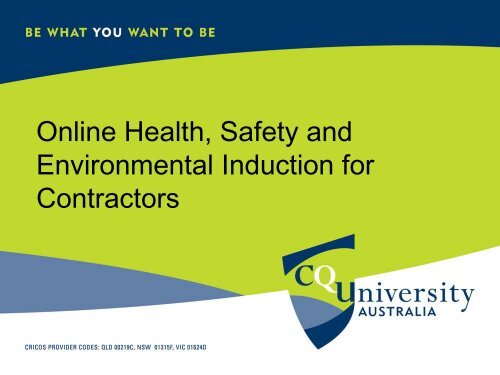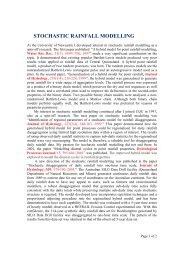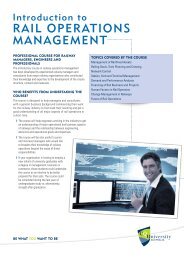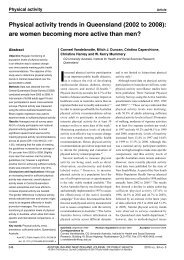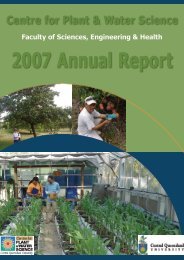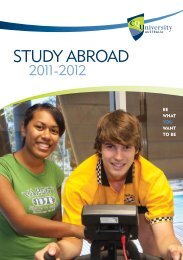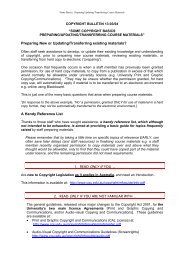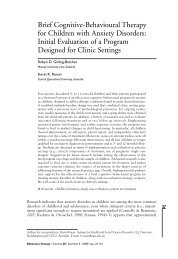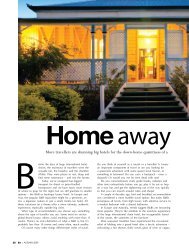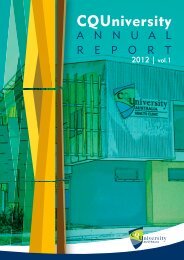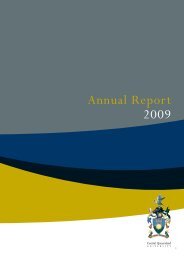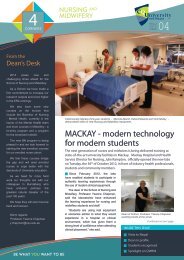Online Health, Safety and Environmental Induction for Contractors
Online Health, Safety and Environmental Induction for Contractors
Online Health, Safety and Environmental Induction for Contractors
You also want an ePaper? Increase the reach of your titles
YUMPU automatically turns print PDFs into web optimized ePapers that Google loves.
<strong>Online</strong> <strong>Health</strong>, <strong>Safety</strong> <strong>and</strong><br />
<strong>Environmental</strong> <strong>Induction</strong> <strong>for</strong><br />
<strong>Contractors</strong>
Welcome to CQUniversity Australia<br />
You will find these icons throughout the induction presentation<br />
to help you navigate. Please use your mouse to select an option.<br />
Next page<br />
Previous page<br />
Home page<br />
Contents
<strong>Induction</strong> Content<br />
• <strong>Induction</strong> Tips<br />
• Welcome to CQUniversity Australia<br />
• <strong>Health</strong> <strong>and</strong> <strong>Safety</strong> Policy Statement<br />
• CQUniversity Infrastructure<br />
• Disclaimer<br />
• Basis Responsibilities<br />
• <strong>Safety</strong> Breaches<br />
• Preparing to Work on University Grounds<br />
• Vehicle Use<br />
• Injuries, Illnesses, Dangerous Events &<br />
Hazards Reports<br />
• Behaviour on Site<br />
• Alcohol <strong>and</strong> Other Drugs<br />
• Emergency – Fire Evacuation Procedure<br />
• <strong>Safety</strong> Signs at CQUniversity<br />
• Hazardous Areas You May Come Across<br />
• Personal Protective Equipment<br />
• Smoking in the Workplace<br />
• Isolation of Fire Alarms<br />
• Barricades <strong>and</strong> Fencing<br />
• First - Aid<br />
• Work that Requires Permits<br />
• Equipment, Plant <strong>and</strong> Tools<br />
• Asbestos<br />
• Housekeeping<br />
• Plant Isolation<br />
• Work Method Statements<br />
• Risk Assessments<br />
• Our Environment<br />
• Waste Management<br />
• Hazardous Substances<br />
• Protection of Bushl<strong>and</strong> &<br />
L<strong>and</strong>scapes Areas<br />
• Completion
<strong>Induction</strong> Tips<br />
There can be a lot of in<strong>for</strong>mation to take in. We recommend that you<br />
work through this presentation, view the links that have been<br />
indicated on the slides <strong>and</strong> then review this <strong>Health</strong>, <strong>Safety</strong> &<br />
<strong>Environmental</strong> <strong>Induction</strong> <strong>for</strong> <strong>Contractors</strong> again after one month.<br />
Please download <strong>and</strong> read the <strong>Health</strong>, <strong>Safety</strong> & Environment<br />
<strong>Induction</strong> H<strong>and</strong>book <strong>for</strong> <strong>Contractors</strong>.<br />
At the end of the presentation you are required to confirm that you<br />
have read the in<strong>for</strong>mation by completing the <strong>Contractors</strong> In<strong>for</strong>mation<br />
Sheet your supervisor will need to sign off <strong>and</strong> then you are to fax the<br />
completed <strong>for</strong>m to the <strong>Health</strong> <strong>and</strong> <strong>Safety</strong> Unit on 4930 6599.<br />
Please visit the <strong>Health</strong> & <strong>Safety</strong> web site <strong>for</strong> more In<strong>for</strong>mation relating<br />
to <strong>Contractors</strong> <strong>and</strong> other <strong>Health</strong> & <strong>Safety</strong> topics.
Welcome to CQUniversity Australia<br />
CQUniversity was established as the Queensl<strong>and</strong> Institute of Technology in<br />
1967 then became the Capricornia Institute of Advanced Education in 1971<br />
be<strong>for</strong>e a transition as the University College of Central Queensl<strong>and</strong> in 1990.<br />
University status was achieved in January 1992 as the University of Central<br />
Queensl<strong>and</strong>. A further name change <strong>and</strong> corporate identify occurred in<br />
1994 to that of Central Queensl<strong>and</strong> University.<br />
In 2008 the University underwent a rebr<strong>and</strong>ing <strong>and</strong> is now known as<br />
CQUniversity Australia.<br />
CQUniversity has a number of different charters that provides facilities <strong>for</strong><br />
work, recreation, learning <strong>and</strong> research.<br />
As a contractor, once you attended this induction, you are approved to<br />
undertake work on Bundaberg, Emerald, Gladstone, Mackay, Noosa <strong>and</strong><br />
Rockhampton campuses.
<strong>Health</strong> <strong>and</strong> <strong>Safety</strong> Policy<br />
The aim of the <strong>Health</strong> <strong>and</strong> <strong>Safety</strong> Policy is to achieve the optimum<br />
attainable level of <strong>Health</strong> <strong>and</strong> <strong>Safety</strong> <strong>for</strong> all staff, students, contractors<br />
<strong>and</strong> visitors throughout the University workplaces <strong>and</strong> workplace<br />
activities, through a process of continuous improvement to fully<br />
integrate <strong>Health</strong> <strong>and</strong> <strong>Safety</strong> into all facets of the University’s operations<br />
<strong>and</strong> activities.<br />
All staff, students, contractors <strong>and</strong> visitors must comply with this policy<br />
<strong>and</strong> contribute to achieving a healthy <strong>and</strong> safe working environment.<br />
In<strong>for</strong>mation relating to the <strong>Health</strong> <strong>and</strong> <strong>Safety</strong> Policy Statement <strong>and</strong><br />
procedures are found on the Policy Portal:<br />
• <strong>Health</strong> <strong>and</strong> <strong>Safety</strong> Policy<br />
A copy of the <strong>Health</strong> <strong>and</strong> <strong>Safety</strong> Policy Statement is on page 3 of the<br />
H<strong>and</strong>book.
CQUniversity Infrastructure<br />
• The Division of Facilities Management (DFM) is responsible <strong>for</strong> major<br />
<strong>and</strong> minor building <strong>and</strong> infrastructure projects, refurbishment,<br />
external works, security, <strong>and</strong> grounds maintenance.<br />
• The In<strong>for</strong>mation Technology Division (ITD) is responsible <strong>for</strong> the<br />
provision of computing <strong>and</strong> communication infrastructure.<br />
• On behalf of each of the above groups a CQUni Project Officer will<br />
be nominated as the University’s agent <strong>for</strong> the contract<br />
administration of the project <strong>and</strong> will also monitor any other issues<br />
identified on site.<br />
• Refer to Reporting Line – Issue Resolution with Contractor (page 4<br />
of the H<strong>and</strong>book).
Disclaimer<br />
The University has prepared the H<strong>and</strong>book to assist <strong>Contractors</strong> <strong>and</strong> their<br />
staff to work safety on University sites <strong>and</strong> abide by the University<br />
requirements relating to people, property <strong>and</strong> the environment.<br />
The aim of the H<strong>and</strong>book is to explain the local site rules <strong>and</strong> some of the<br />
safety obligations of <strong>Contractors</strong> <strong>and</strong> their employees while working at the<br />
University.<br />
The Contactor has full responsibility to:<br />
• Identify all relevant legislation dealing with health <strong>and</strong> safety;<br />
• Underst<strong>and</strong> the full extent of the University <strong>and</strong> the <strong>Contractors</strong><br />
respective legal obligations; <strong>and</strong><br />
• Implement all measures necessary to protect <strong>and</strong> promote the safety of<br />
all persons working on or neat the site on which the <strong>Contractors</strong> is<br />
working.
Basis Responsibilities<br />
<strong>Contractors</strong> working on University grounds are obliged to take<br />
reasonable care to :<br />
• Ensure their own health <strong>and</strong> safety;<br />
• Avoid risking the health <strong>and</strong> safety of others;<br />
• Help with familiarisation of new staff;<br />
• Ensure your staff are trained <strong>and</strong> technically, professionally or legally<br />
competent to do the work;<br />
• Practice good housekeeping;<br />
• Use personal protective equipment as trained <strong>and</strong> supplied; <strong>and</strong><br />
• Keep fully in<strong>for</strong>med of any activities which could or may potentially<br />
pose a safety threat, hazard or danger to the safety or wellbeing of<br />
any persons.
<strong>Safety</strong> Breaches<br />
• CQUniversity treats instances of safety breaches very seriously.<br />
• Should any CQUni employee observe any <strong>Contractors</strong> acting in an<br />
unsafe manner, the CQUni Project Officer will be advised, the incident<br />
recorded <strong>and</strong> the Contractor notified <strong>and</strong> instructed to take immediate<br />
correction action.<br />
The following will be viewed by CQUni as a fundamental breach of the<br />
Contractor’s obligation:<br />
• if repeated safety breaches by the Contractor are observed;<br />
• if CQUni considers that the Contractor is generally undertaking any<br />
part of the project in an unsafe manner; or<br />
• if the <strong>Contractors</strong> disregards any instruction to take prompt action to<br />
cease any unsafe work practices or fails to eliminate any safety hazard.
Preparing to Work on University Grounds<br />
All building <strong>and</strong> related trade contractors must be registered with the<br />
University.<br />
• All <strong>Contractors</strong> must have completed a General Construction<br />
<strong>Induction</strong>. A card is issued to a person who successfully completes<br />
training the unit of competency - CCOHS1001A.<br />
• Attended a CQUni designed <strong>Health</strong>, <strong>Safety</strong> & <strong>Environmental</strong><br />
Contractor <strong>Induction</strong> session, either face-to-face or online.<br />
• Report to the designated area to sign-in <strong>and</strong> contact relevant CQUni<br />
Project Officer.<br />
• Obtain authorisation to proceed, wear identification badge.<br />
• <strong>Contractors</strong> must sign out at end of each day/job.<br />
• After hours – contact Security (0418792982).<br />
• Project job – no signing required.
Vehicle Use<br />
Parking space is available at each Campus. Service vehicle bays are<br />
provided <strong>for</strong> the use of all service <strong>and</strong> maintenance vehicles providing<br />
close access to the work sites. Short term drop off parks are also<br />
provided.<br />
Parking or driving across footpaths <strong>and</strong> grassed l<strong>and</strong>scaped areas is<br />
prohibited.<br />
In instances where the nature of the work makes it essential to locate<br />
a vehicle on l<strong>and</strong>scaped areas, the CQUni Project Officer will advise<br />
the least damaging pathway <strong>and</strong> parking location.<br />
All CQUni road signage will be followed as well as normal traffic road<br />
rules.
Injuries, Illnesses, Incident, Dangerous Events <strong>and</strong><br />
Hazard Reports<br />
Report all injuries, incidents <strong>and</strong> dangerous events involving health,<br />
safety <strong>and</strong> environment issues, no matter how small, to the CQUni<br />
Project Officer using the CQUni Incident Form <strong>and</strong>/or Hazard Form.<br />
These <strong>for</strong>ms are to be completed if any incident involves a contractor,<br />
student, staff member or visitor, as soon as possible <strong>and</strong> be<strong>for</strong>e the<br />
end of the working day.<br />
CQUni will notify all reportable events to the relevant authorities.<br />
CQUni will undertake an investigation with all relevant parties to<br />
enable corrective actions to be implemented.
Behaviour on Site<br />
During any construction or maintenance work on site all <strong>Contractors</strong> are to<br />
ensure the least amount of disruption as possible to students, staff <strong>and</strong><br />
visitors.<br />
Offensive behaviour will not be tolerated which can include:<br />
• All behaviour <strong>and</strong> language that rein<strong>for</strong>ces inappropriate, demeaning or<br />
discriminatory attitudes or assumptions about persons based on age,<br />
race, sex, disability, sexual orientation, transgender status, or martial<br />
status; <strong>and</strong><br />
• Behaviour such as whistling, unsolicited remarks of a sexual nature <strong>and</strong><br />
swearing.<br />
Noise near buildings should be kept as low as possible <strong>and</strong> loud radios <strong>and</strong><br />
other music are not permitted. Dogs (apart from people with disabilities)<br />
are not to be brought onto University grounds.
Alcohol <strong>and</strong> Other Drugs<br />
<strong>Contractors</strong> affected by alcohol, other drugs or medication which<br />
impairs function are not permitted to carry out work on University<br />
campuses or properties.<br />
Where it is observed that a Contractor or their staff may be affected by<br />
alcohol or other drugs, the matter will be referred to the Contractor<br />
who will be required to take immediate action.<br />
The incident will be noted by the CQUni Project Officer. Should the<br />
situation continue or reoccur the Contractor will be requested to leave<br />
the site.
Emergency – Fire Evacuation Procedures<br />
R A C E . . .<br />
<strong>Contractors</strong> are to follow the instructions of the Wardens at all times.<br />
Remove person/s from the immediate danger to a place of safety.<br />
Alert, raise the alarm, break manual call point (if installed), ensure all<br />
occupants are aware of the emergency, contact emergency services on<br />
0-000 (internal lines) or 000, contact University Security.<br />
Confine, close doors <strong>and</strong> windows (if safe to do so) attempt to extinguish<br />
the fire (only if you know how to do it <strong>and</strong> it is safe to do so).<br />
Evacuate the building via the nearest safe fire exit, <strong>and</strong> proceed to your<br />
assembly area. Roll call is conducted by the Warden. Do not re-enter<br />
the building until advised that it is safe to do so by the responding<br />
authorities.
<strong>Safety</strong> Signs at CQUniversity<br />
Throughout the University a variety of health <strong>and</strong> safety signs are in<br />
place warning of a potential hazard or hazardous conditions <strong>and</strong><br />
location of emergency in<strong>for</strong>mation. These signs are in place to protect<br />
the safety of you <strong>and</strong> of others <strong>and</strong> there<strong>for</strong>e access to these areas<br />
may require further approval. Please check with your CQUni Project<br />
Officer if your are unsure.
Hazardous Areas You May Come Across<br />
Due to the variety <strong>and</strong> nature of activities carried out at the University,<br />
you may come across areas which are unique when compared to the<br />
average workplace. In many cases these areas can be hazardous if the<br />
correct control measures are not followed.<br />
You may required further induction e.g. Laboratories <strong>and</strong> your CQUni<br />
Project Officer is to contact the Supervisor prior to any work being<br />
per<strong>for</strong>med. Care must to taken when carrying out work on any of the<br />
following:<br />
• Animal houses<br />
• Physical Containment (PC1/PC2) <strong>and</strong> other Laboratories<br />
• Chemical Stores<br />
• High Voltage Substations<br />
• Broken Pit Lids<br />
• Fume Cupboards
Personal Protective Equipment<br />
<strong>Contractors</strong> shall supply their employees with all appropriate personal<br />
protective equipment <strong>and</strong> shall ensure that their employees use it<br />
correctly as per Legislation, Codes of Practice <strong>and</strong> Safe Working<br />
Procedures.<br />
Personal Protection Equipment can include but not limited to:<br />
• Hard hats;<br />
• <strong>Safety</strong> boots;<br />
• Gloves;<br />
• <strong>Safety</strong> glasses; <strong>and</strong><br />
• High visibility vests/clothing.
Smoking in the Workplace<br />
CQUniversity is committed to preventing exposure to tobacco smoke<br />
<strong>for</strong> all staff, students, contractors <strong>and</strong> visitors in all University<br />
workplaces.<br />
The University provides guidelines detailing the responsibilities of<br />
University staff, students, contractors <strong>and</strong> visitors to prevent persons<br />
being exposed to tobacco smoke in the workplace <strong>and</strong> providing<br />
support to staff <strong>and</strong> students who want to quit smoking.<br />
Smoking is not permitted in any building wholly occupied by<br />
CQUniversity, within four metres of the entrance to such building or<br />
near intake vents including covered walkways <strong>and</strong> in University<br />
vehicles (l<strong>and</strong>, water or air).<br />
• Smoking in the Workplace Policy
Isolation of Fire Alarms<br />
Many areas of the University are covered by automatic fire detection<br />
<strong>and</strong> alarm systems linked to the Queensl<strong>and</strong> Fire <strong>and</strong> Rescue Service<br />
(QFRS). If works involve dust, vibration, moisture, aerosols sprays,<br />
fumes or mechanical damage to detection equipment:<br />
• <strong>Contractors</strong> shall ensure that fire alarms are temporarily isolated. The<br />
Contractor shall advise the CQUni Project Officer who will arrange<br />
the temporary isolation with Security.<br />
If, during the course of the works, the automatic alarm is triggered the<br />
QFRS shall attend the building. Should any triggering be caused by the<br />
Contractor, the Contractor shall bear the cost of any charges levied by<br />
the QFRS.
Barricades <strong>and</strong> Fencing<br />
To ensure the safety of all persons on the work site, or passing by,<br />
<strong>Contractors</strong> must supply <strong>and</strong> erect any necessary barricades <strong>and</strong> fencing<br />
appropriate to the work they are doing. The CQUni choice of fencing is<br />
two (2) metre wire.<br />
All materials, equipment plant <strong>and</strong> tools must be safety stored within<br />
the barricades <strong>and</strong> fencing as required.<br />
Particular care must be taken to check <strong>and</strong> secure the barricades <strong>and</strong><br />
fences whenever <strong>Contractors</strong> leave the work area. This may include<br />
providing temporary lighting on the site, if deemed necessary by the<br />
Contractor or directed by the CQUni Project Officer.<br />
Pedestrian access <strong>and</strong> emergency exits must not be impeded without<br />
prior approval of the CQUni Project Officer.
First - Aid<br />
<strong>Contractors</strong> are responsible <strong>for</strong> the provision <strong>and</strong> first-aid treatment of<br />
their staff.<br />
Should emergency treatment be needed, an ambulance should be called<br />
on the emergency national number 000. Remember to dial 0 <strong>for</strong> an<br />
external line from an internal telephone.<br />
Security is also to be notified so as to assist in directing ambulances.<br />
All Security Guards are qualified First-Aid Officers.
Work that Requires Permits<br />
A Permit must be obtained from the CQUni Project Officer prior to<br />
commencing any of the following:<br />
• Hot work;<br />
• Trenching <strong>and</strong> Excavation;<br />
• Confined spaces;<br />
• Working with Asbestos Containing Materials<br />
(Rockhampton Campus Buildings <strong>and</strong> Dawson Chambers –<br />
Gladstone).
Equipment, Plant <strong>and</strong> Tools<br />
<strong>Contractors</strong> need to be aware that there are various legal competencies<br />
relating to the use of certain equipment, plant <strong>and</strong> tools <strong>and</strong> that their<br />
staff are deemed competent to use <strong>and</strong> maintain the following:<br />
• Electrical equipment<br />
• Machine guarding<br />
• H<strong>and</strong> tools<br />
• Lasers<br />
• Explosive power tools<br />
• Mobile mechanical plant<br />
• Compresses air equipment<br />
• Electric welding<br />
• Chainsaws
Asbestos<br />
A number of buildings at CQUniversity Rockhampton Campus used Asbestos<br />
Containing Materials (ACM) during construction. These products include floor<br />
tiles, asbestos cement piping <strong>and</strong> sheeting, ceiling tiles etc.<br />
CQUniversity has developed an Asbestos Management Plan (AMP) to deal<br />
with the identification, management <strong>and</strong> removal of asbestos from all<br />
University Sites. Asbestos Registers are in place <strong>for</strong> all buildings where ACM<br />
are located.<br />
<strong>Contractors</strong> must adhere to the AMP <strong>and</strong> the Asbestos Registers whenever<br />
dealing with asbestos.<br />
All <strong>Contractors</strong> are to view the AMP prior to any works being carried out in<br />
areas where asbestos material have been identified. A permit <strong>for</strong> works is to<br />
be obtained prior to the commencement of any works. A Work Method<br />
Statement is to be developed <strong>and</strong> presented to the CQUni Project Officer<br />
be<strong>for</strong>e works is commenced.
Housekeeping<br />
Rubbish must be managed in accordance with <strong>Environmental</strong> Protection Act <strong>and</strong> Local<br />
Council By-Lays.<br />
Under no circumstances are contractors to dump rubbish on vacant l<strong>and</strong> on any<br />
campus.<br />
The disposal <strong>and</strong> washing out of excess concrete from trucks is not permitted on site.<br />
Paint contractors shall not dispose of paints or clean painting equipment on University<br />
grounds.<br />
Site Tidiness:<br />
The work-site <strong>and</strong> surrounding area should be kept clean <strong>and</strong> tidy <strong>and</strong> any safety or<br />
fire hazards removed promptly (e.g. oily rags, flammable materials).<br />
Keep in mind other safety actions such as replacing lids <strong>and</strong> caps on containers, wiping<br />
up of spills, removing or bending over nails <strong>and</strong> bolts <strong>and</strong> removing other dangerous<br />
protruding objects progressively which may contribute to the overall site safety.
Plant Isolation<br />
The University has implemented a Plant Isolation System.<br />
<strong>Contractors</strong> must ensure that they use the tagging system in accordance with<br />
CQUni Plan Isolation <strong>Safety</strong> Tag <strong>and</strong> Lock-out Procedure <strong>and</strong> Plant Isolation<br />
Policy.<br />
<strong>Contractors</strong> shall use “Danger” <strong>and</strong> “Out of Service” tags.<br />
For your own protection:<br />
• Isolate all equipment, switches <strong>and</strong> controls;<br />
• Place tag/s <strong>and</strong> lock/s on all electrical switched <strong>and</strong> switchboards, values,<br />
main isolators or key rings.<br />
For the protection of others:<br />
• Never remove someone’s else tag;<br />
• Do not operate switches etc that displays a “Danger Tag “ or “Out of Service<br />
Tag”.
Work Method Statements<br />
CQUni requests all <strong>Contractors</strong> will prepare <strong>and</strong> provide Work Method<br />
Statements (WMS) where <strong>Contractors</strong> are engaged in high risk activities. A<br />
copy of the WMS is to be given to the CQUni Project Officer prior to starting<br />
work on the site. A permit to work is then issued by the CQUni Project Officer.<br />
A WMS is to be prepared <strong>for</strong> high risk construction activities which include:<br />
• Entering a trench deeper than 1.5m;<br />
• Using explosives;<br />
• Entering a confined space;<br />
• Using hazardous materials;<br />
• Where a person could fall at least 2m;<br />
• Activity is per<strong>for</strong>med out on a roof with a pitch >26 degrees;
Work Method Statement - continued<br />
• Contractor concludes that activity could result in death or bodily harm;<br />
• Prescribed activity;<br />
• Demolition work;<br />
• Removal of asbestos containing martials;<br />
• Tilt up <strong>and</strong> precast concrete construction work;<br />
• Structural alternations that require temporary support to prevent collapse;<br />
• The movements of powered mobile plant at the workplace;<br />
• Work on a telecommunications tower;<br />
• Work on, or adjacent to water where there is a risk of drowning;<br />
• Work on, or adjacent to, a road or railway;<br />
• Work on, or near, a chemical or fuel or refrigerant line;<br />
• Work near an exposed energised electrical installation;<br />
• Work in an area that may have a contaminated or flammable atmosphere;<br />
• Work in an area where there are artificial extremes of temperature.
Risk Assessments<br />
• A risk assessment is to be conducted by <strong>Contractors</strong> to demine the<br />
risk associated with the work/project. If it is determined that the<br />
risk is low, <strong>Contractors</strong> are not required to submit a WMS. However,<br />
they are required to abide to all relevant legislation <strong>and</strong><br />
CQUniversity Policies.<br />
• These Policies will be made available to the Contractor upon<br />
request.
Our Environment<br />
• CQUni accepts that every individual has a “duty of care” to the environment.<br />
This means that <strong>Contractors</strong> need to:<br />
• Take all reasonable steps to prevent pollution <strong>and</strong> protect the environment;<br />
• Show that everything that could have been done to prevent an incident from<br />
occurring, has been done;<br />
• Ensure than all necessary pollution control measures are in place <strong>and</strong> are<br />
regularly checked <strong>and</strong> maintained to minimise the risk of an environmental<br />
incident;<br />
• <strong>Contractors</strong> can be fined, or imprisoned, <strong>for</strong> seriously polluting the<br />
environment;<br />
• Contractor are required to report to the CQUni Project Officer as soon as<br />
they become aware of any incident that may cause environmental harm<br />
(e.g. chemical spill or leak).
Waste Management<br />
The University strongly encourages <strong>Contractors</strong> to identify waste<br />
minimisation options at the start of each project/job. These include:<br />
• Working out costs <strong>and</strong> savings involved in minimising waste;<br />
• Taking care not to over-order;<br />
• Ensuring that subcontractors are responsible <strong>for</strong> their waste;<br />
• Recycling materials where practicable;<br />
• Buying materials with minimal package;<br />
• The Contractor is legally responsible to ensure their waste is disposed of in<br />
the correct manner;<br />
• Hazardous waste treatment <strong>and</strong> disposal must comply with <strong>Environmental</strong><br />
Protection Authority Regulations.
Hazardous Substances<br />
• The Contractor must submit a Material <strong>Safety</strong> Data Sheet (MSDS) <strong>for</strong> all<br />
substances <strong>and</strong> a risk assessment of all hazardous substances to the<br />
CQUni Project Officer <strong>for</strong> each substances that is to be brought onto the<br />
University grounds.<br />
• Substances must be clearly labelled, h<strong>and</strong>led, stored <strong>and</strong> disposed as per<br />
instructions – MSDS.<br />
• Clean-up materials must be provided in case of spillage.
Protection of Bush L<strong>and</strong> <strong>and</strong> L<strong>and</strong>scaped Areas<br />
• All native flora <strong>and</strong> faunas is valued very highly, <strong>and</strong> <strong>Contractors</strong> as<br />
asked to respect the campus ecology when on grounds.<br />
• If any work is likely to disturb busk l<strong>and</strong>, l<strong>and</strong>scaping or grassed<br />
areas, the Contractor must advise the CQUni Project Officer a<br />
minimum of one week prior to the intended commencement of<br />
work.<br />
• Ever effect must be made to avoid disturbing trees as well as<br />
l<strong>and</strong>scaped <strong>and</strong> grassed areas. Where negligent work results in<br />
damage to these areas, the cost of rectifying damage will be<br />
recovered from the Contractor.
Completion<br />
<strong>Contractors</strong> are requested to comply with the intent of the <strong>Health</strong>, <strong>Safety</strong> <strong>and</strong><br />
Environment <strong>Induction</strong> H<strong>and</strong>book <strong>for</strong> <strong>Contractors</strong> <strong>and</strong> participate in the<br />
achievement of a safe <strong>and</strong> healthy working environment. Ongoing support of<br />
the University <strong>Health</strong> & <strong>Safety</strong> Policy is the responsibility of everyone.<br />
You must now download <strong>and</strong> complete the <strong>Contractors</strong> In<strong>for</strong>mation Sheet.<br />
Please include General Construction <strong>Induction</strong> number on the sheet. Your<br />
supervisor will need to sign off <strong>and</strong> then you are to fax the completed <strong>for</strong>m to<br />
the <strong>Health</strong> <strong>and</strong> <strong>Safety</strong> Unit on 4930 6599.<br />
A list of all approved <strong>Contractors</strong> is located at on the Contractor <strong>Induction</strong><br />
website.


